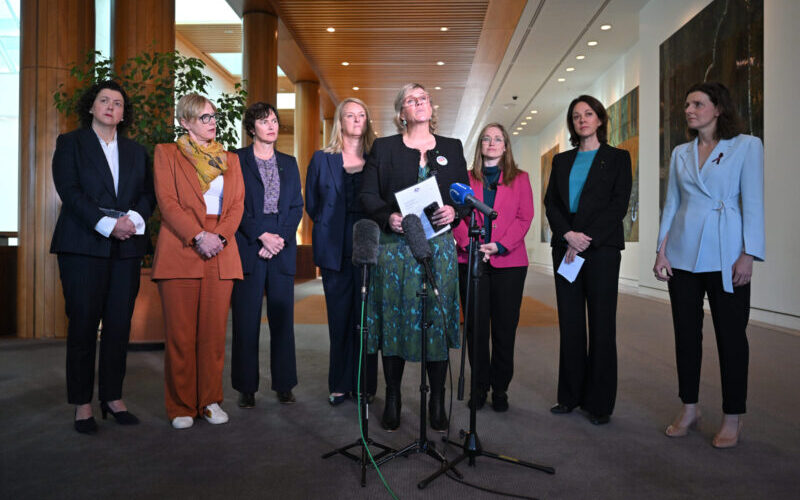
Recent disclosures from the Australian Electoral Commission (AEC) reveal significant disparities in election funding for independent candidates, raising questions about the effectiveness of such spending in achieving electoral success. The data, released on October 24, 2023, indicates that while a total of $29.7 million was donated to 88 independent candidates, the contributions from organizations like Climate 200 varied considerably, with some candidates receiving substantial funding despite low chances of winning.
The AEC’s disclosure rules permit the release of individual candidate donation data while withholding political party donation figures until February 2026. Among the independent candidates, approximately one third of the funds, amounting to $10.8 million, originated from Climate 200. Notably, nearly $1 million was allocated to candidates with minimal prospects for victory, while others who narrowly lost received only a fraction of that amount.
In the McPherson electorate in Queensland, Climate 200 and investor Rob Keldoulis contributed $961,409 to Erchana Murray-Bartlett‘s campaign. She garnered 13.7% of the vote, which increased to 24% after preferences. The seat is significant as it is the home of Climate 200’s executive director, Byron Fay. In another instance, in Calare, the same donors contributed $819,470 to Kate Hook, who achieved 16.7% of the vote, later rising to 26.9% after preferences. Analysts had predicted limited chances for both candidates, leading some within the movement to criticize the spending as “wasteful.”
The allocation of funds could have made a crucial difference in close races, such as in Bean (ACT) and Fremantle, where Jessie Price lost by just 700 votes and Kate Hullet fell short by 1,400 votes. Climate 200 provided Price’s campaign with only $54,000 and Hullet’s campaign received $50,000. “If we had more funding, we could have been stronger on social media and in creating a profile,” Price stated.
Discontent regarding funding decisions has emerged within the independent candidate ranks. A source close to Climate 200 suggested that polling and demographic considerations influenced financial support. Yet critics have pointed out that candidates like Murray-Bartlett were specifically funded with the intention of running, while others were provided stipends for expenses. Former campaign manager Damien Attwood noted witnessing direct funding to candidates, which raises questions about the independence of those backed by such organizations.
Critics argue that these financial arrangements contradict the independence ethos of the “Teal” movement, which emphasizes community engagement. Former campaign manager Josh Addison remarked, “The whole idea of becoming an MP is representing your constituents’ values and interests.” Climate 200 donated over $10.8 million before the May election, with additional millions contributed by allied groups.
The situation raises questions about the future direction of the Teal movement. Some candidates reportedly agreed to share their databases of volunteers and donors with Climate 200 before being allowed to run, potentially infringing on privacy rights. Reports have confirmed data transfers from independent campaigns in Berowra and Cowper, with non-disclosure agreements also noted in Forrest and Berowra.
Despite these challenges, Climate 200 maintains that it has not engaged in any formal agreements with candidates regarding funding or data. A spokesperson emphasized that the organization operates in a “data-driven” manner, seeking insights from campaigns requesting support.
After the May elections, discontent has been simmering within the Teal ranks. New donation rules, described by movement founder Simon Holmes a Court as a “financial gerrymander,” are perceived as having undermined the movement’s potential. Critics attribute the lack of success to generalized messaging and a corporate culture within organizations like Climate 200 and its allied consultants.
In contrast, some candidates, including Price, refuted claims of interference from a central authority, asserting that their campaigns were initially seen as less promising. In regional seats, advisors from urban backgrounds employed city-centered messaging that failed to resonate in rural areas, leading to unexpected losses in places like Cowper and Wannon.
Despite setbacks, Climate 200 points to an increase in the overall vote for independents, rising from 5.3% in 2022 to over 7% in the recent election, a figure stemming from a larger pool of candidates. The organization views this as a positive sign for future independent campaigns.
As the Teal movement looks ahead, there are calls to return to grassroots principles that previously resonated with voters. The push for community-based engagement is echoed in comments from Tina Brown, an independent candidate in Berowra, who suggested that new laws might catalyze a centrist movement prioritizing collaboration and genuine representation.
In summary, the 2025 election landscape for independent candidates remains uncertain. While funding from organizations like Climate 200 has been substantial, the mixed outcomes highlight the complexities of campaign financing and the need for a return to foundational community engagement principles. As the movement navigates these challenges, it stands at a crossroads, weighing the balance between centralized support and grassroots authenticity.






